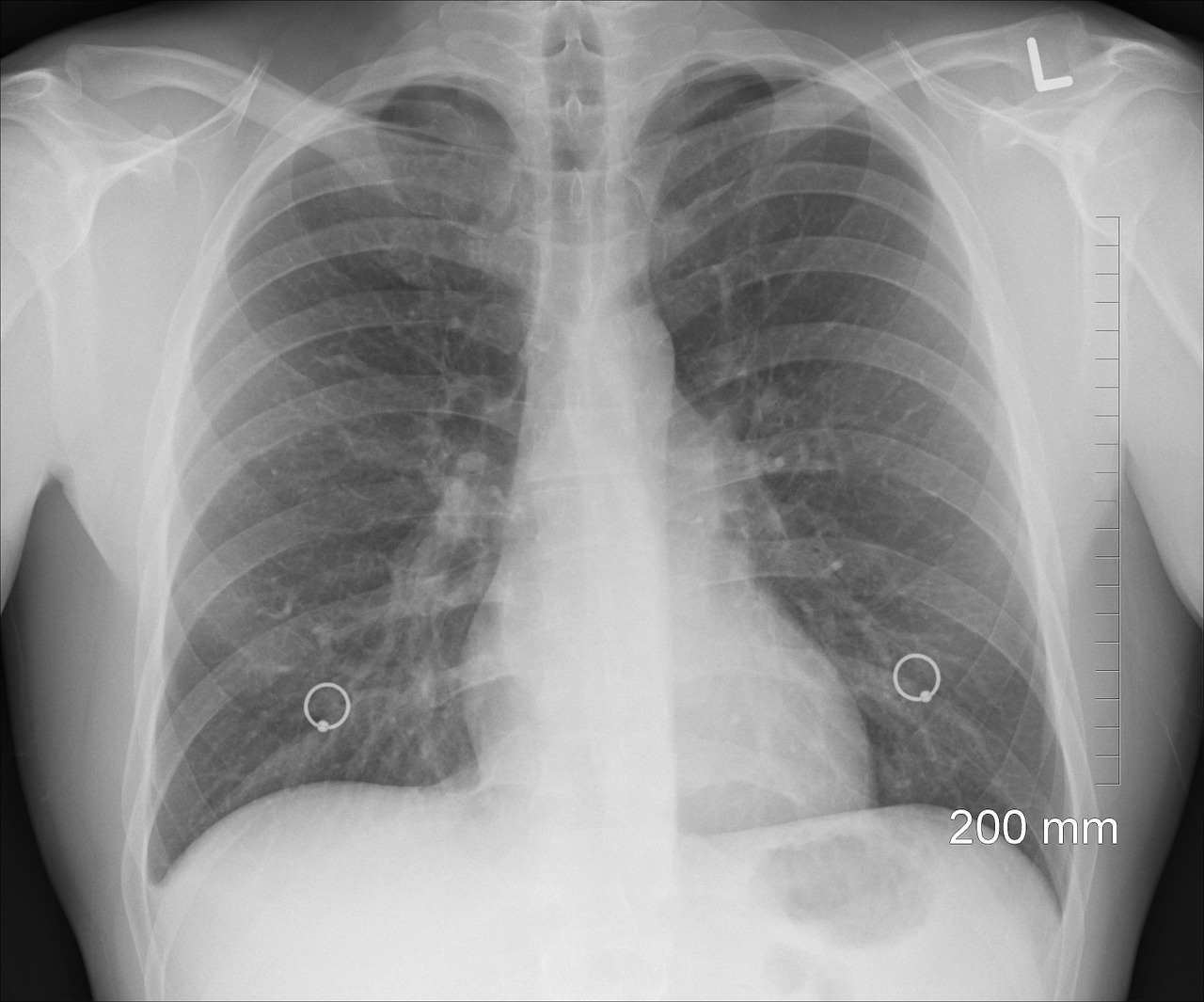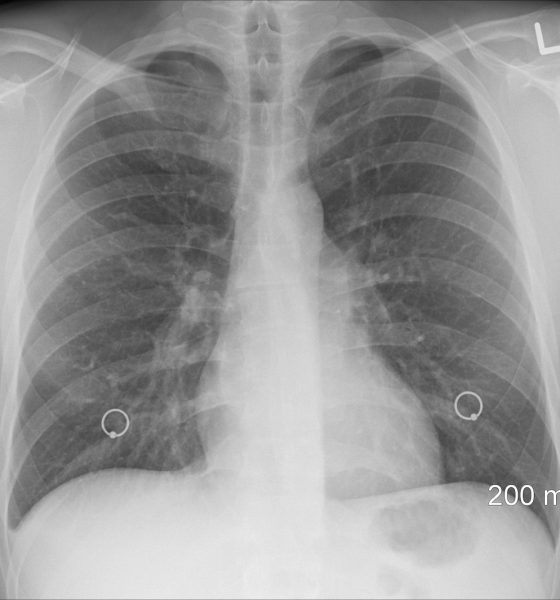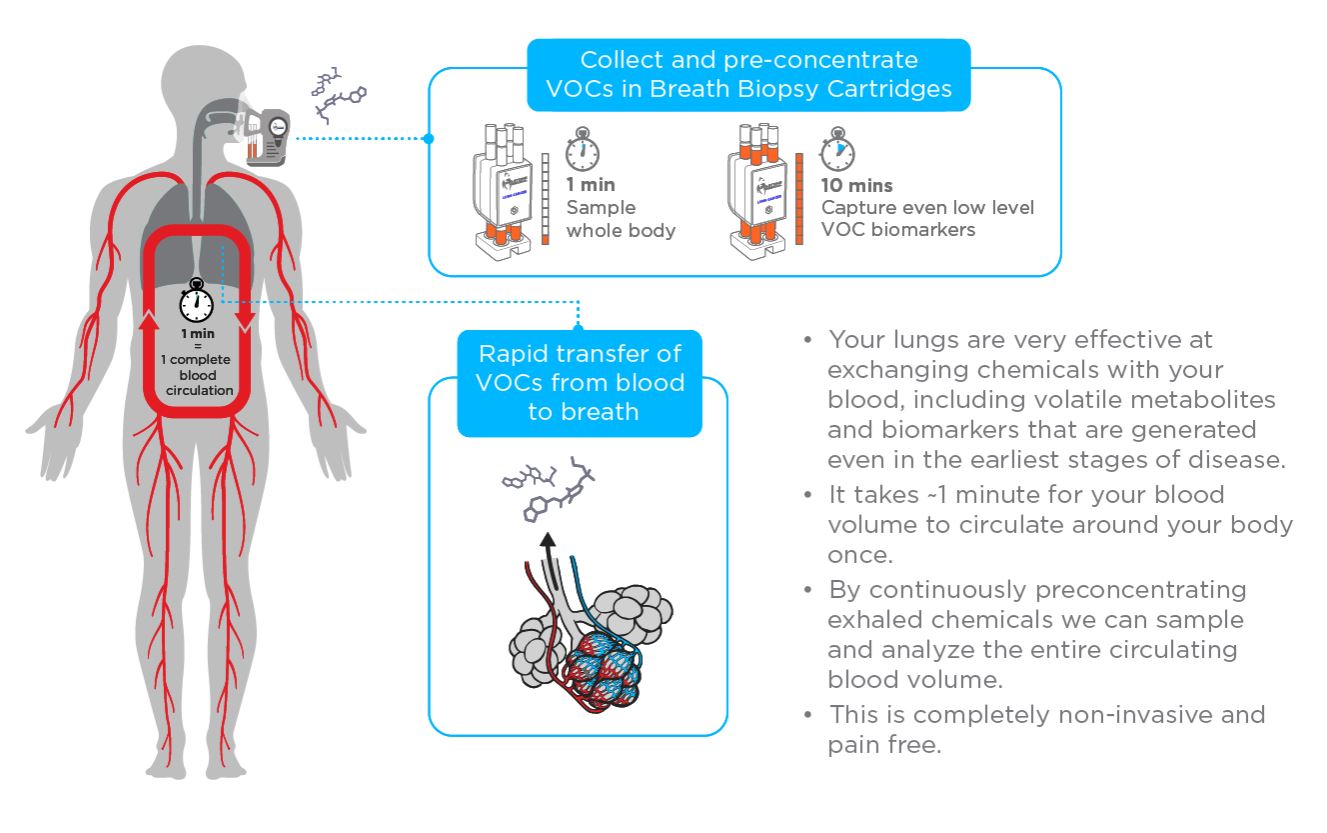

News
Breath-based cancer test begins clinical trials in the UK
The Cancer Research UK Cambridge Center has begun clinical trials for Cambridge-based Owlstone Medical’s Breath Biopsy® technology, a breathalyzer-type test that analyzes patients’ exhalations for biomarkers indicative of cancer. Samples from 1500 people, to include healthy participants as controls, will be used to determine whether the types of breath molecules assessed can positively identify both the presence of cancer and its type. The earlier cancer can be detected, the better the potential outcome for patients. Thus, noninvasive testing technology like Breath Biopsy® would be a very useful tool in cancer treatment.
The Breath Biopsy® test will search for what are called volatile organic compounds (VOCs), i.e., emissions triggered by cellular metabolic processes that enter the bloodstream. These act as biomarkers for cancer due to changes the disease makes to the body or made to the cancer growth itself. For example, during tumor growth, gene or protein changes can damage cell membranes and then release molecular byproducts specific to that type of tumor, VOCs, which are circulated in the lungs and exhaled. Normal human breath contains hundreds of VOCs from the body’s regular metabolic processes; however, certain types have been specifically linked to cancers, and researchers have been working to narrow the parameters to make clinically-useful tests, as is being done with Owlstone’s technology.

Early detection of cancer is one of the most significant tools that can impact its lethality, namely because most cancers aren’t found until they are at an advanced stage. Certain cancers, such as ovarian, lung, pancreatic, and colorectal, are hard to detect in their early stages, making survival rates low from the progression at the time of discovery. Also, tests for the presence of cancers are often invasive and expensive. Tools for accurate breath analysis identifying specific cancer biomarkers would provide significant improvement on both of these counts.
According to the National Cancer Institute, an estimated 1,735,350 new cases of cancer were diagnosed in 2018 in the United States, and 609,640 people died from the disease. Worldwide, that number is around 9 million per year. Statistics like these make the field of cancer research ripe for opportunities to address its numerous challenges with emerging and developing technologies.
Biotech has embraced cancer research and treatment as well as other fields not traditionally geared towards biological research. For example, artificial intelligence is aiding in cancer identification and prediction. Of further interest, genetic engineering is addressing environmental toxins known to cause cancer, and 3D printing is even being used in space to assess radiation’s effects on living tissue, a known factor in skin cancers. The push towards putting more humans in space will continue to expand the knowledge base in this area as science by NASA and similar national agencies and partners explore these issues as they relate to off-planet travel.

News
Tesla China quietly posts Robotaxi-related job listing
Tesla China is currently seeking a Low Voltage Electrical Engineer to work on circuit board design for the company’s autonomous vehicles.

Tesla has posted a new job listing in Shanghai explicitly tied to its Robotaxi program, fueling speculation that the company is preparing to launch its dedicated autonomous ride-hailing service in China.
As noted in the listing, Tesla China is currently seeking a Low Voltage Electrical Engineer to work on circuit board design for the company’s autonomous vehicles.
Robotaxi-specific role
The listing, which was shared on social media platform X by industry watcher @tslaming, suggested that Tesla China is looking to fill the role urgently. The job listing itself specifically mentions that the person hired for the role will be working on the Low Voltage Hardware team, which would design the circuit boards that would serve as the nervous system of the Robotaxi.
Key tasks for the role, as indicated in the job listing, include collaboration with PCB layout, firmware, mechanical, program management, and validation teams, among other responsibilities. The role is based in Shanghai.
China Robotaxi launch
China represents a massive potential market for robotaxis, with its dense urban centers and supportive policies in select cities. Tesla has limited permission to roll out FSD in the country, though despite this, its vehicles have been hailed as among the best in the market when it comes to autonomous features. So far, at least, it appears that China supports Tesla’s FSD and Robotaxi rollout.
This was hinted at in November, when Tesla brought the Cybercab to the 8th China International Import Expo (CIIE) in Shanghai, marking the first time that the autonomous two-seater was brought to the Asia-Pacific region. The vehicle, despite not having a release date in China, received a significant amount of interest among the event’s attendees.
Elon Musk
Elon Musk and Tesla AI Director share insights after empty driver seat Robotaxi rides
The executives’ unoccupied tests hint at the rapid progress of Tesla’s unsupervised Robotaxi efforts.

Tesla CEO Elon Musk and AI Director Ashok Elluswamy celebrated Christmas Eve by sharing personal experiences with Robotaxi vehicles that had no safety monitor or occupant in the driver’s seat. Musk described the system’s “perfect driving” around Austin, while Elluswamy posted video from the back seat, calling it “an amazing experience.”
The executives’ unoccupied tests hint at the rapid progress of Tesla’s unsupervised Robotaxi efforts.
Elon and Ashok’s firsthand Robotaxi insights
Prior to Musk and the Tesla AI Director’s posts, sightings of unmanned Teslas navigating public roads were widely shared on social media. One such vehicle was spotted in Austin, Texas, which Elon Musk acknowleged by stating that “Testing is underway with no occupants in the car.”
Based on his Christmas Eve post, Musk seemed to have tested an unmanned Tesla himself. “A Tesla with no safety monitor in the car and me sitting in the passenger seat took me all around Austin on Sunday with perfect driving,” Musk wrote in his post.
Elluswamy responded with a 2-minute video showing himself in the rear of an unmanned Tesla. The video featured the vehicle’s empty front seats, as well as its smooth handling through real-world traffic. He captioned his video with the words, “It’s an amazing experience!”
Towards Unsupervised operations
During an xAI Hackathon earlier this month, Elon Musk mentioned that Tesla owed be removing Safety Monitors from its Robotaxis in Austin in just three weeks. “Unsupervised is pretty much solved at this point. So there will be Tesla Robotaxis operating in Austin with no one in them. Not even anyone in the passenger seat in about three weeks,” he said. Musk echoed similar estimates at the 2025 Annual Shareholder Meeting and the Q3 2025 earnings call.
Considering the insights that were posted Musk and Elluswamy, it does appear that Tesla is working hard towards operating its Robotaxis with no safety monitors. This is quite impressive considering that the service was launched just earlier this year.
Elon Musk
Starlink passes 9 million active customers just weeks after hitting 8 million
The milestone highlights the accelerating growth of Starlink, which has now been adding over 20,000 new users per day.

SpaceX’s Starlink satellite internet service has continued its rapid global expansion, surpassing 9 million active customers just weeks after crossing the 8 million mark.
The milestone highlights the accelerating growth of Starlink, which has now been adding over 20,000 new users per day.
9 million customers
In a post on X, SpaceX stated that Starlink now serves over 9 million active users across 155 countries, territories, and markets. The company reached 8 million customers in early November, meaning it added roughly 1 million subscribers in under seven weeks, or about 21,275 new users on average per day.
“Starlink is connecting more than 9M active customers with high-speed internet across 155 countries, territories, and many other markets,” Starlink wrote in a post on its official X account. SpaceX President Gwynne Shotwell also celebrated the milestone on X. “A huge thank you to all of our customers and congrats to the Starlink team for such an incredible product,” she wrote.
That growth rate reflects both rising demand for broadband in underserved regions and Starlink’s expanding satellite constellation, which now includes more than 9,000 low-Earth-orbit satellites designed to deliver high-speed, low-latency internet worldwide.
Starlink’s momentum
Starlink’s momentum has been building up. SpaceX reported 4.6 million Starlink customers in December 2024, followed by 7 million by August 2025, and 8 million customers in November. Independent data also suggests Starlink usage is rising sharply, with Cloudflare reporting that global web traffic from Starlink users more than doubled in 2025, as noted in an Insider report.
Starlink’s momentum is increasingly tied to SpaceX’s broader financial outlook. Elon Musk has said the satellite network is “by far” the company’s largest revenue driver, and reports suggest SpaceX may be positioning itself for an initial public offering as soon as next year, with valuations estimated as high as $1.5 trillion. Musk has also suggested in the past that Starlink could have its own IPO in the future.








